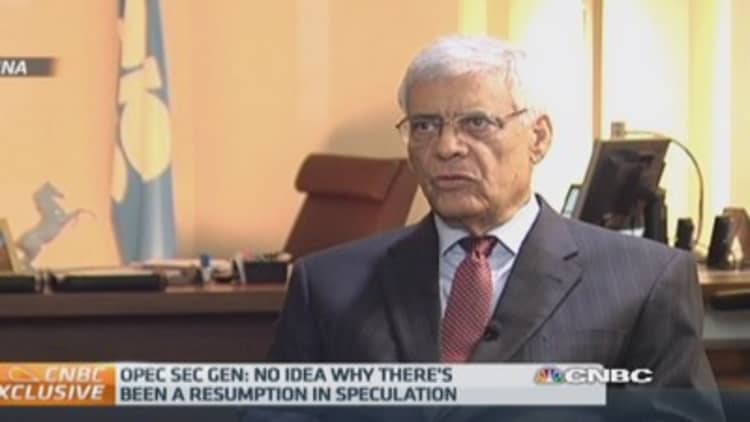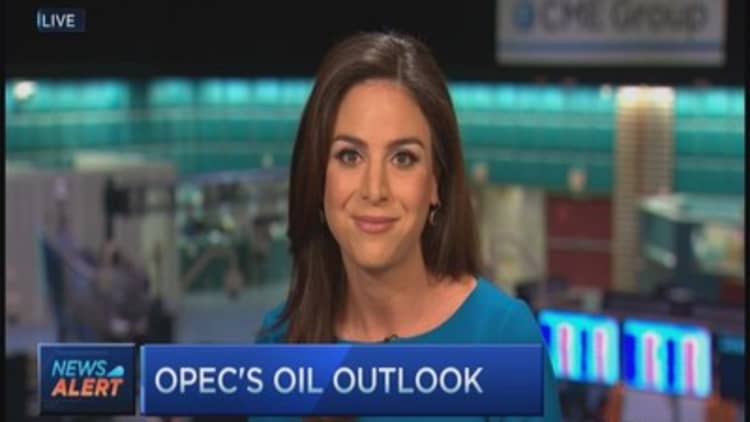
The group of the world's biggest global oil exporters has cut its forecasts for the price growth and global demand for oil.
In its annual World Oil Outlook, published Thursday afternoon, the Organization of the Petroleum Exporting Countries (OPEC) said there would be a "small decline in real values" over this decade together with a "constant nominal price" of $110 per barrel between now and 2020.
Read MoreLook out below! Oil is not done falling
Economic forecasts for the U.S. were raised, while predictions for the "BRIC" countries (Brazil, Russia, India and China) were cut in the medium term.
The group added that there was a danger of "substantial over-capacity in the sector."
The report comes out at a torrid time for the oil markets. The price of oil (as measured in WTI crude) reached its lowest level since August 2011 earlier this week after Saudi Arabia cut prices.
Adel Abdul Mahdi, Iraq's oil minister, told his country's parliament last week that the organization was already waging a "price war" within itself – and there are concerns that this may result in a race to the bottom which ultimately damages oil exporters.
Read MorePro: Energy investors should prepare for $60 oil
OPEC has 12 members including Middle Eastern oil exporters like the United Arab Emirates and Saudi Arabia, as well as African exporters including Nigeria and Angola and Latin American countries Ecuador and Venezuela. It often cuts or raises production to affect the price of oil.
The group's dominance has been threatened by the U.S. pumping out more shale oil than forecast. At the same time, there is less global demand than expected, as emerging markets and European economies are growing slower than forecast.
Several of the OPEC countries, including Saudi Arabia and Iraq, have cut prices and boosted production to make sure that they maintain their market share. U.S. producers need a higher price for oil than Saudi producers to break even – believed to be around $70 a barrel.

Read More What countries lose when oil prices drop
U.S. industry needs to import less from OPEC countries when the U.S.'s own production is at a three decade high. The U.S. has also just opened the door to very small oil exports, for the first time in four decades, but is unlikely to export on a mass scale any time soon.
In the long term, global oil demand is expected to increase by around 21 million barrels per day to 111.1 million b/d by 2040. Developing countries will boost growth by 28 million b/d, while consumption by the more mature economies in the Organisation for Economic Co-operation and Development will actually fall by over 7 million b/d.
The next key event for oil price watchers is likely to be OPEC's meeting in Vienna on November 27, where any clue to the plans of the Saudis in particular will be carefully examined.
- By CNBC's Catherine Boyle


